Buy/Drive/Burn: Alternative Japanese Compacts From 2008

In our last edition of Buy/Drive/Burn, we considered the Mazda Protegé, Mitsubishi Mirage, and Subaru Impreza sedans from 1998. Most of you preferred the Protegé as your Buy of the three. Today we fast forward to the same offerings in 2008, and see if things shake out differently.
Note: We’ve chosen mid-range trims for the Mazda and Mitsubishi as the base Impreza is notably more expensive than the other two in basic form.
Mazda 3
Mazda ditched the Protegé name after 2003, probably in an attempt to escape its well-known rust issues across the nation. For 2008 the 3 is in the final year of its first-generation, as a new model promises to continue the 3’s sales success in 2009. On offer in sedan or hatchback body styles, the 3 is available in eight different trims and shares its platform with the Ford Focus and Volvo S40. Today’s trim is the middle-range i Touring Value (weird name) sedan, which uses the smaller of the four-cylinder engines available. With 2.0 liters of displacement, the 3 produces 148 horsepower sent through the front wheels via the five-speed manual. Its ask is $16,595.
Mitsubishi Lancer
Mitsubishi also abandoned its smallest brand, Mirage, in the North American market after 2001. Its replacement in 2002 was the very slightly larger Lancer. Lancer is in its ninth global generation this year and is all-new for 2008. Based on the Chrysler-Mitsubishi GS platform, the new Lancer is available initially only as a sedan. Trims are three in number: DE, ES, or GTS. The ES is today’s choice at $16,090, and offers a 2.0-liter inline-four good for 152 horses. The power is allocated to the front wheels via the five-speed manual transmission.
Subaru Impreza
Impreza is also new for 2008, as Subaru debuts its third-generation model around the globe. Like the Mazda, Impreza is available in sedan and hatchback formats; the Impreza wagon becomes a thing of the past. Four trims on Impreza range from the very basic 2.5i through the expensive and racy WRX STi. The base 2.5i trim asks $16,995 as it comes standard with Subaru’s all-wheel-drive system. The boxer-four engine produces 170 horsepower, sent through all four corners via the five-speed manual.
Which of these three compact sedans is worth a Buy with your Great Recession 2008 dollars?
[Images: Mazda, Mitsubishi, Subaru]

Interested in lots of cars and their various historical contexts. Started writing articles for TTAC in late 2016, when my first posts were QOTDs. From there I started a few new series like Rare Rides, Buy/Drive/Burn, Abandoned History, and most recently Rare Rides Icons. Operating from a home base in Cincinnati, Ohio, a relative auto journalist dead zone. Many of my articles are prompted by something I'll see on social media that sparks my interest and causes me to research. Finding articles and information from the early days of the internet and beyond that covers the little details lost to time: trim packages, color and wheel choices, interior fabrics. Beyond those, I'm fascinated by automotive industry experiments, both failures and successes. Lately I've taken an interest in AI, and generating "what if" type images for car models long dead. Reincarnating a modern Toyota Paseo, Lincoln Mark IX, or Isuzu Trooper through a text prompt is fun. Fun to post them on Twitter too, and watch people overreact. To that end, the social media I use most is Twitter, @CoreyLewis86. I also contribute pieces for Forbes Wheels and Forbes Home.
More by Corey Lewis
Latest Car Reviews
Read moreLatest Product Reviews
Read moreRecent Comments
- Olivehead The Honda Civic wins on looks and interior material quality and style. The Civic looks like a scaled down "real" car (i.e., midsize) while the Corolla never lets you forget what it is-a compact car, harkening back to the Tercel, etc. No comparision either in the interior materials of the Civic (a notch below Acura level) and general layout. There too, the Corolla comes off as a compact runabout. The Civic hatchback is especially cool.
- Mike Beranek While the product may appear to be "better", only time will tell. The American automotive environment can chew a car up and spit it out. Will these Chinese EVs survive like a quarter-century old Cavalier, or will they turn out like VinFast's "cars"?
- Mike Beranek This police vehicle will be perfect for when the State of Florida starts tracking every pregnancy.
- Dave M. The Highlander hybrid, a larger, heavier vehicle, gets better mpgs. Why? Also, missed opportunity - if Toyota had made this a hatchback, they could have scooped up the "want a Tesla S but not ready for a full EV" crowd, however small or large they may be....
- TheMrFreeze Difficult call...the more the mainstream automakers discontinue their more affordable models and only sell crazy overpriced EVs and trucks, the more appealing the idea of letting in cheap imported cars becomes with the buying public. If the government is going to impose tariffs on Chinese vehicles, at the same time they need to be getting with the Big 3 and telling them to fill the void with affordable models and not use the tariff as an excuse to simply raise prices. Otherwise, public pressure could see the tariffs withdrawn.I seem to recall the last administration put a 25% tariff on Chinese steel, at which point the US manufacturers immediately used the opportunity to raise their prices 25%...that needs to not happen.





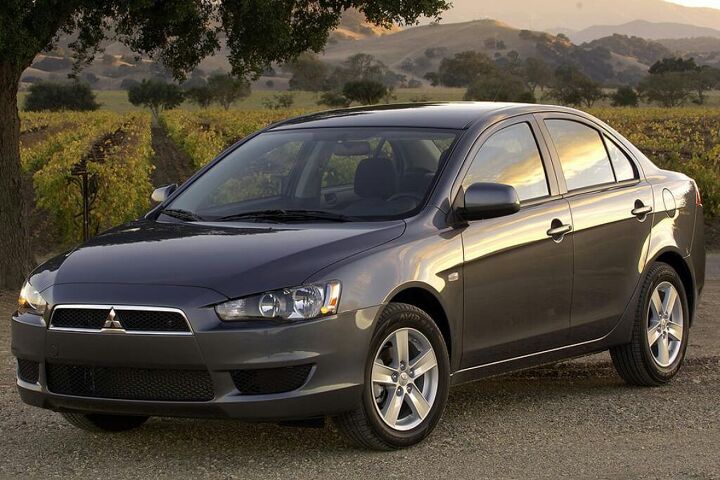















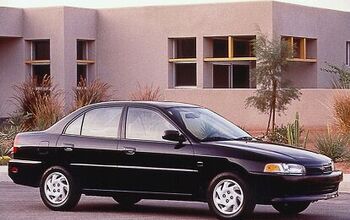
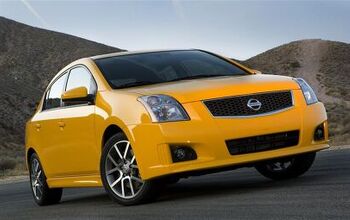


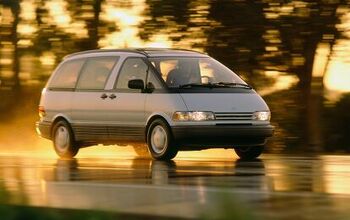





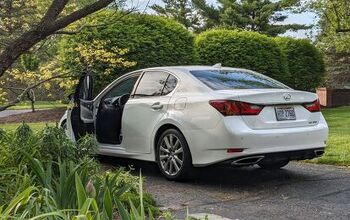

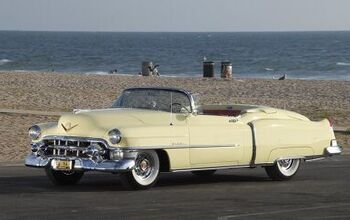


Comments
Join the conversation
This is a tough one because overall I think these three were very closely matched. Buy: Lancer. It looks the best, has the most features and it's surprisingly reliable for what it is (arguably the least reliable Japanese brand). Drive: Subaru. It must be fun on an unpaved road + it's got some power. But I don't want anything to do with the EJ25 engine in the long term. Burn: Mazda. The only reason this is a burn and not the Subaru is because this 3 was behind the other two in safety equipment. Side/Curtain airbags and ABS were an option while it was standard equipment on the other two. Had this been the 2.5 the outcome would've been entirely different
Hey Corey, another idea for a B/D/B: "Near Premium Midsize Cars from [insert year]". Volvo S60 (2.5T had 208hp) Audi A4 (3.0/3.2 200+hp version) Acura TSX (TSX had 200hp) All were relatively close in price, too. You could also throw in the Subaru Legacy GT as a wild card....